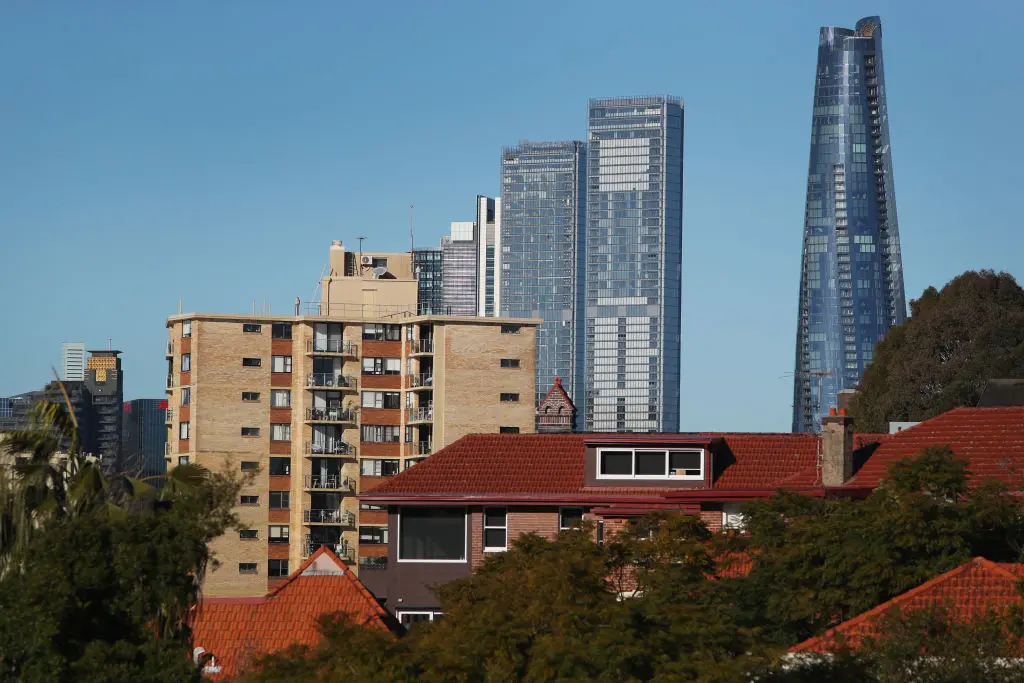Australia’s housing market is slowing down after a long period of growth, but this downturn is likely to be short lived according to property researcher CoreLogic.
The property market analytics company’s latest data shows the national housing index fell 0.1 percent in December following 21 months of growth that drove up housing values 14.3 percent.
Explaining this recent downturn, CoreLogic Head of Research Eliza Owen said home values and interest rates were too high for buyers.
She noted that the decline in home values had corresponded with a seasonally slow period, when value changes are usually weaker.
“Australia’s housing market still looks weaker when accounting for seasonal effects though, and Sydney, Melbourne, and Canberra still saw price falls,” she said.
‘Shallow and Short-Lived’ Downturn
CoreLogic, however, predicts the housing value declines may not be large for multiple reasons, including sellers withholding property from sale, draining supply.A cyclical downswing could take place at the start of 2025, but this may not be big.
“At the national level, home value declines tend to be shorter and smaller than periods of increase. Part of this is because sellers may be able to withhold their property from sale until values are rising, effectively restricting available supply during periods of price falls,” Owen said.
“Another reason this could be a relatively small market downturn is the tailwinds for property demand in 2025. Growth in real incomes may support more buyer demand as inflation moderates, and a reduction in interest rates would boost borrowing capacity.”
She noted there was still a shortage of homes relative to the population and constraints on new housing delivery due to limited capacity in the construction sector.
Home Building Approvals Down
Meanwhile, data released by the Australian Bureau of Statistics on Jan. 7 shows building approvals for residential properties fell in the month of November.The ABS data revealed the total number of dwellings approved slid 3.6 percent to 14,998, following a 5.2 percent increase in approvals in October.
Head of construction statistic Daniel Rossi said the fall in dwellings approved in November was across all residential building types.
He noted approvals for private sector houses dropped 1.7 per cent, while private dwellings excluding houses slumped 10.8 per cent.
“Despite the fall, approvals for total dwellings remain 3.2 per cent higher than November 2023.” he noted.
House Values by State
Home values in Sydney fell 0.6 percent (pdf) in December, while they slid 0.7 percent in Melbourne and 0.5 percent in Canberra and Hobart.However, property prices still increased by 0.5 percent in Brisbane, 0.6 percent in Adelaide, 0.7 percent in Perth and 0.4 percent in Darwin. Overall, this led to a 0.1 percent decline in property values for the month.
Tim Lawless, research director at CoreLogic, said the result means the housing market is catching up with the reality of market dynamics.
House Prices Still Went Up Annually
Looking at annual figures, house prices rose 4.9 percent nationally in 2024, adding about $38,000 to the median value of a home on average.In Brisbane they soared 11.2 percent, while they sky rocketed 19.1 percent in Perth and 13.1 percent in Adelaide. Melbourne house prices however, slid 3 percent, while home values also declined by 0.6 percent in Hobart and 0.4 percent in Canberra.
In Darwin, house prices rose 0.8 percent in a year, while they increased 2.3 percent in Sydney and 6 percent in combined regional areas in 2024.
The median value of a home in Sydney is now nearly $1.2 million, while it is $774,093 in Melbourne, $890,746 in Brisbane, $814,430 in Adelaide, and $813,016 in Perth.







